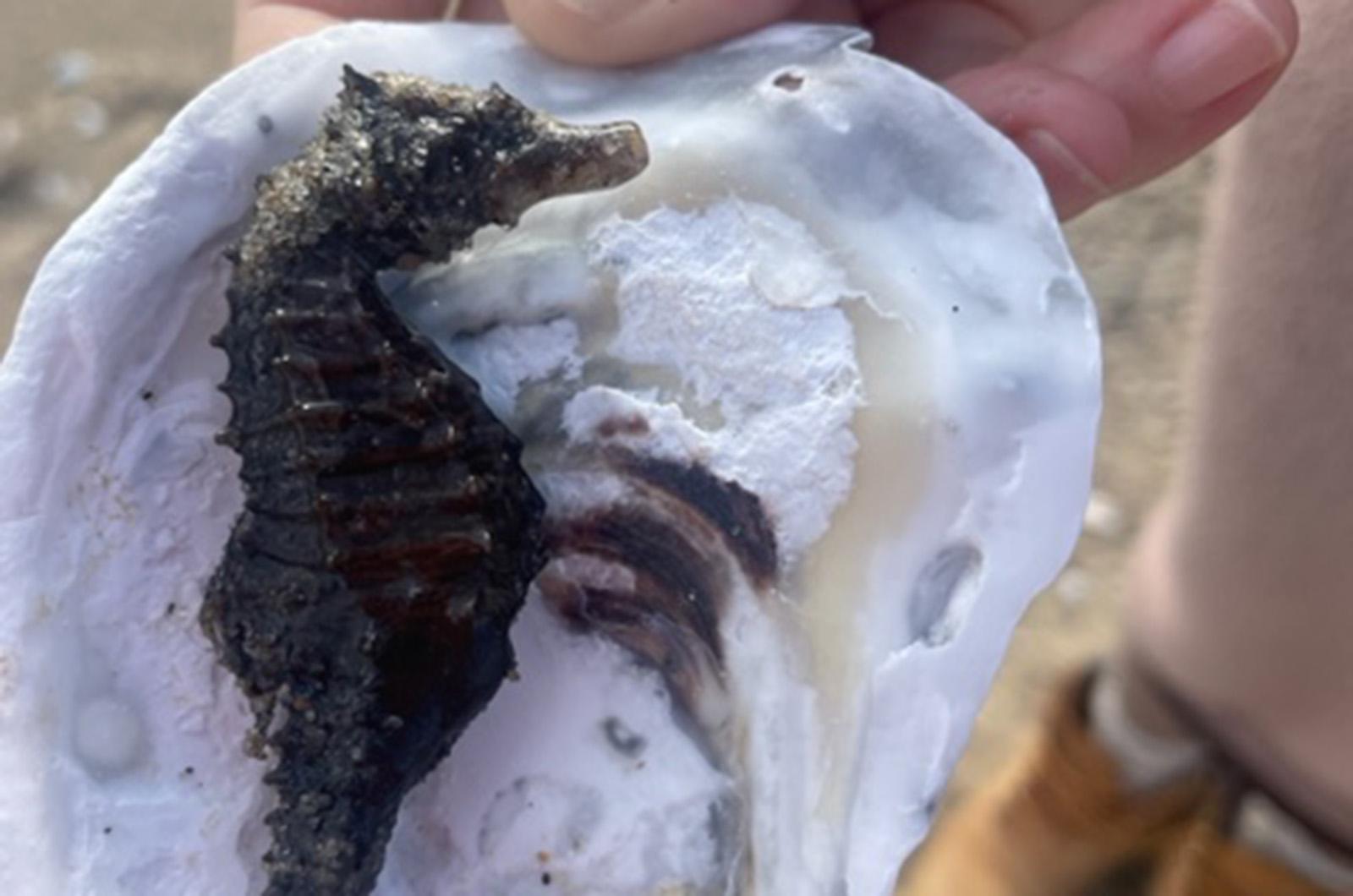Love is grand, and passion plays out in humans and horses alike.
A month or so ago, the community was entranced when musician and teacher Ben Hughes dropped to his knee to propose to his sweetheart Josey Kirkland in front of the crowd at Best Fest on Circuit avenue. She said yes. These two lovebirds recently found a creature whose romance rivals their own.
On a recent beach walk, Josey and Ben — well, actually, their dog Birdie — found a seahorse. The creature was dead but had washed up on the shoreline in perfect condition. It was a fortuitous find, considering that we are at the marine animal’s northernmost range.
Seahorses — in this case the species was hippocampus erectus — are known for some of their special mating rituals. Most folks are aware that it is the male of the species that carries and gives birth to the up to hundreds of babies fertilized, held and expelled from his abdomen.
There is much more to their mating habits and amorous activities. Seahorses are monogamous and, some scientists report, mate for life. This makes sense, since they are slow swimmers and are found in low densities — and there are no seahorse dating apps to help them find each other. Staying together provides for more pregnancies and increased reproductive success.
To keep the flame alive, seahorse couples have developed interesting and elaborate rituals. Courtship displays include the pair changing color and entwining tails to find and woo each other. Once mated, the twosome will dance together every morning to reinforce their bond.
And like Ben and Josey when they perform together, seahorses harmonize their melodies. Seahorses have a crown-like bony crest called a coronet located on the back side of the head at the edge of their skull. Each seahorse has its own unique coronet, much as our fingerprints are distinct to us. As the coronet moves against the skull, a clicking sounds results. These sounds serve to help these animals locate each other; in one account when the seahorses embrace the two distinct clicks, unify into one louder clamor, strengthening their union.
Reproduction is achieved after the female deposits up to 1,500 eggs in a long sticky string into the male’s pouch: he fertilizes them and closes his pouch. These embryos will be fed and oxygenated in his pouch for up to two weeks before they are birthed during a labor that can last for several days and has him writhing and thrusting. Once birthed, the miniature seahorses are on their own and within a year, they can start the reproductive cycle again.
Even with all of these little seahorses born, their populations often remain low. Only a few of the hundreds that emerged from their father’s pouch survive to adulthood. They are prey to wild and domestic predators, including humans that capture them as commercial fisheries bycatch, for the aquarium trade, for traditional medicine and as curios sold for the beauty and the luck they are purported to bring. Their habitat, too, has declined.
Perhaps I should have saved this article for Valentine’s Day; however, love — and finding a seahorse on the beach — has its own timetable. True love, like a seahorse, is rare and beautiful to behold. And seahorses are full of examples for the newly-engaged couple: dance together every day, greet your partner every morning with affection, curl up together often and continue to make beautiful music together.
Suzan Bellincampi is Islands director for Felix Neck Wildlife Sanctuary in Edgartown and the Nantucket Wildlife Sanctuaries. She is also the author of Martha’s Vineyard: A Field Guide to Island Nature and The Nature of Martha’s Vineyard.




Comments
Comment policy »